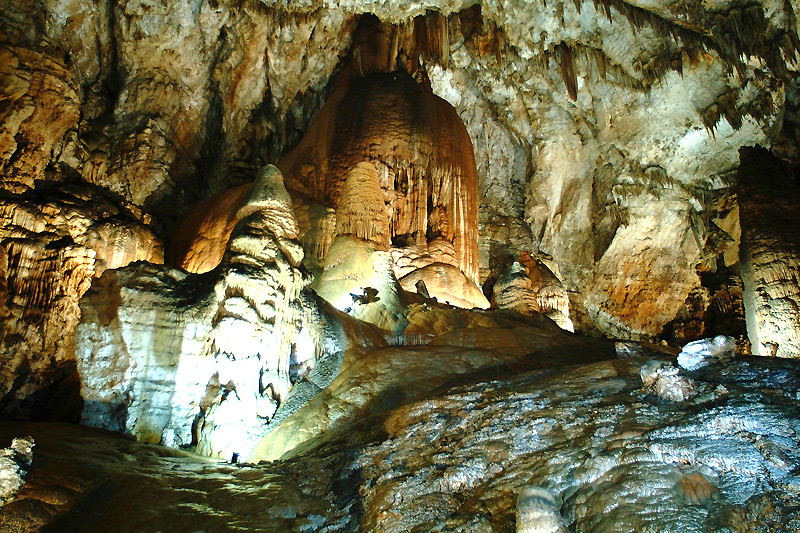Su Marmuri Cave 0 Comments

In the Ulassai village, 197 km and 2 and a half hours by car from the Gabbiano Azzurro Hotel & Suites., in the south-east of Sardinia, also famous for the works of great artist Maria Lai who was born in Ulassai, there is the Su Marmuri Cave, (in the Sardinian language "marmuri" means marble) one of the largest and most impressive natural caves in all of Europe.
The beautiful cave, almost 1 km long, whose ceilings in some points reach a height of almost 50 meters, is located in the Ulassai mountains (Ogliastra-Salto di Quirra), at an altitude of 880 meters. It truly is one of those beautiful places that we don't know we have right in our own homeland! The route to visit the cave lasts about an hour and a half, with a guide who will give all the historical and naturalistic information necessary for the visit.
It was only in the middle of the last century that the cave was opened to the public to make this fascinating natural place known, being until then was unfamiliar to most. The Su Marmuri Cave originates from an underground river and despite the name recalling marble, the rock of the cave is made up of limestone of different colors depending on the different mineral deposits.
After a two-minute climb between the rocks, you descend into the heart of the mountain via a stepped path, continuing on a natural path partly made up of a metal walkway and eased by a handrail. The visible part, entirely flat, is 850 m long. Peculiarities of the cave are the imposing rooms with very high vaults, the numerous calcite concretions, imposing stalactites, stalagmites and columns. You pass through various rooms, for example the "hall of mirrors", due to the mirroring effects of two small lakes. Through the "cactus room" for the shape of the stalagmites, the "organ room", up to the "chocolate room" for the particular dark dust deposited on the rocks. The variety of shapes inside the cave and the vastness of the different environments are truly fascinating. Just raise your head upwards to contemplate natural sculptures that have been present in the cave for millennia.
In the cave live the Ovobathysciola gestroi, an underground beetle, the largest colony of bats in Italy and a species of the Sardinian geotriton, called Speleomanthes imperialis, a particular amphibian that has adapted to cave life especially due to the high degree of humidity present, which allows him to keep his skin moist, being his organ for breathing, given that he has no lungs.
It is advisable to cover yourself well even in summer with at least a sweatshirt and a k-way and also a hat, due to the temperature changes between the outside and the inside of the cave where it is never above 10 degrees, and with a rather high humidity rate. The humidity factor seems to have been significant for the fact that the cave, despite being very large, was never used by man in ancient times for this cause, in fact there are no testimonies or findings testifying man’s presence in this cave. We also recommend only closed shoes with grippy soles because there is a risk of slipping in several places.
“Walking inside the earth’s arteries makes me feel like an unexpected and passing but absolutely privileged guest.” (Bear Grylls)
--Written by Daniela Toti
Share your opinion with us!